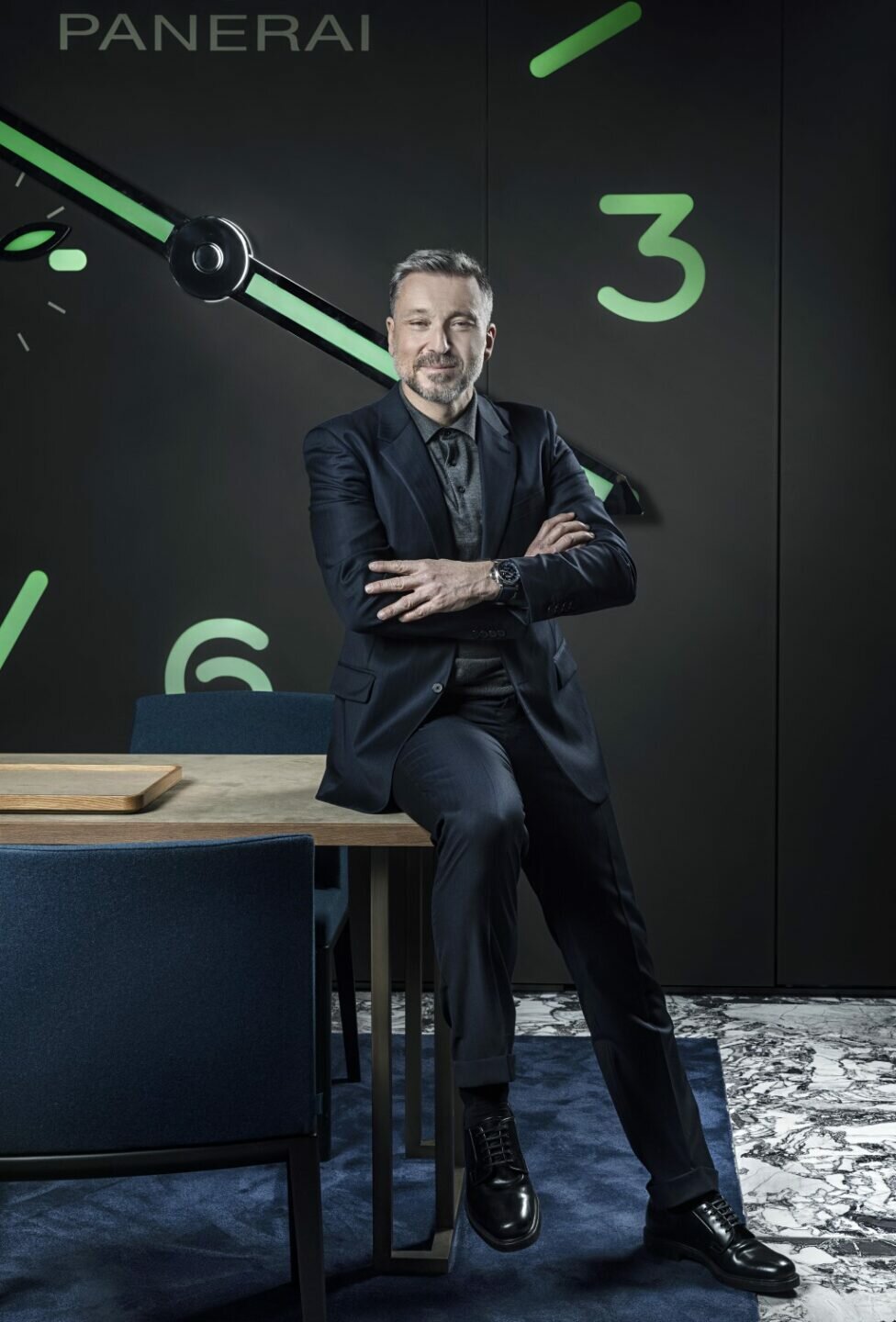One hundred years ago, it was common practice for watchmakers to collude and support one another: Cartier used Jaeger-LeCoultre movements, while Rolex collaborated with the likes of Tiffany & Co and Zenith. Over time, key players started becoming more insular, opting to vertically integrate their manufactures and hold on to production secrets for dear life. This remained status quo until last year, when Panerai released the names of all the suppliers it had worked with on the Submersible eLAB-ID, a watch constructed from 98.6 percent recycled materials.
Releasing the details of all the suppliers marks the brand’s commitment to its sustainable journey, one that it recognises it cannot embark on alone. Although one watch or brand cannot change the world, collective action can engender measurable change and lower the industry’s carbon imprint.
Panerai has committed to reducing its carbon emissions throughout its value chain. The recently launched Submersible QuarantaQuattro 44mm comes with straps either made from 30 percent recycled rubber, or with 68 percent recycled fabrics. CEO Jean-Marc Pontroué says that by 2023, all its packaging will be made from recycled materials, and it will use eSteel (a steel alloy made from recycled metals) for all its steel watches by 2025.
It’s all quite noble, but material development is an expensive endeavour. Pontroué offers an alternative view: “Yes, it is more expensive for us because we’re still learning. The watch industry is only at the early stages of integrating sustainability into business practices. When we allowed our competitors access into our ecosystem last year, it was so they wouldn’t spend another three years doing the same research we did. Accelerating the process to include other operators that believe in the same goal means we can all create an ecosystem. This gives us critical size and drives the prices down”.
It’s an approach that has clearly been carefully considered. In fact, at this year’s Watches & Wonders, Panerai also announced a partnership with pre-owned watch specialist Watchfinder & Co., further reinforcing its commitment to a circular economy. “This is the time to learn, absorb, fail, recover, and the time for things to happen. We progressed from a concept watch last year (the ELab ID), to one that we could produce in volume (the eSteel), and an extension this year; in the next few years, our goal is to extend this practice to 75 percent of our assortment,” says Pontroué.
“We work with a number of authorities in our business model, such as Prada, as well as our ambassadors Jeremy Jauncey and Mike Horn, who are advocates for environmental preservation. We are also supported by Unesco, who gave us access to hundreds of scientists who know better than us where it’s urgent to intervene in the world. What we do here allows us to go beyond watchmaking; we are able to create a network of knowledge that allows us to be more impactful,” he adds.
This meaningful approach permeates every aspect of the brand. A few years ago, Panerai started packaging some of its limited-edition watches — especially those made in collaboration with external partners — with unique experiences. Its 2019 Submersible Mike Horn Edition 47mm, for instance, offered buyers the opportunity to join the adventurer to the Arctic.
Pontroué points out that while the “product is the hero”, it is necessary to “enrich the platforms, the surroundings, the worlds associated to each of our product categories”. This strategy can be seen in the brand’s newest venture into web 3. The Radiomir Eilean Experience Edition, launched earlier this year, is a 50-piece limited edition timepiece that comes with one of the 50 Panerai Genesis NFTs (non-fungible token), as well as an opportunity to sail the Amalfi Coast in the Panerai-branded Eilean boat.
“We don’t want to behave like a brand that’s always integrating some gimmick. We are a serious technical brand and we are serious about our products. This NFT is about how we can enrich the customer experience.”
Jean-Marc Pontroué
The one-of-a-kind NFT will “evolve” with the buyer’s experience as he or she sets sail around the Amalfi Coast, with even more surprises unveiled along the way. It will also unlock access to Panerai’s future web 3 endeavours.
The goal, ultimately, is to equip watch with a digital passport; this will serve not just as a proof of ownership (ed’s note: Panerai is not the first watchmaker to use blockchain to authenticate its watches), but it will also offer hungry customers a treasure trove of information, whether it’s about movement making or the brand’s sustainability journey, and access to enhanced services and benefits.
“We don’t want to enter a new field if it is not proven to be an added value to our customers,” he says. “Technology for us is not the final goal. It’s a tool to enrich the customer journey in the Panerai world,” says Pontroué.
After all, owning a Panerai is not simply about owning a piece of wrist real estate. Forget the long-held notion that you collect watches for future generations. Owning a Panerai is about living in the now, about embarking on unforgettable journeys, and about being part of a collective movement for the greater environmental good.


